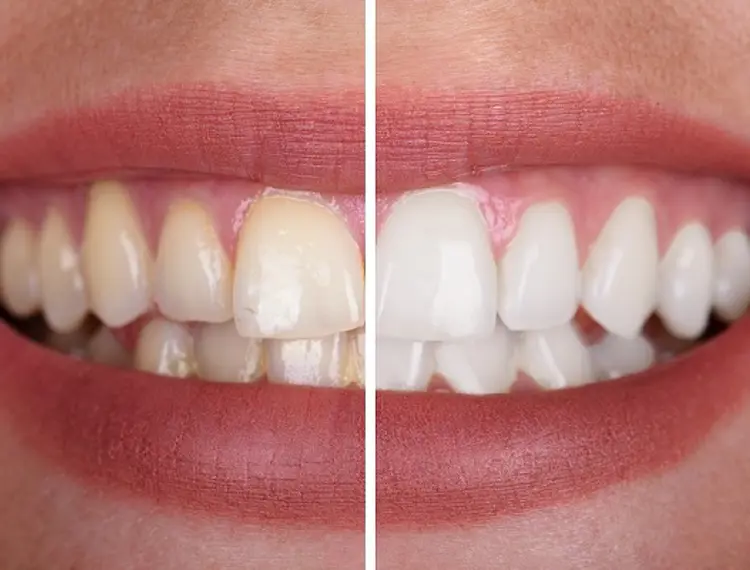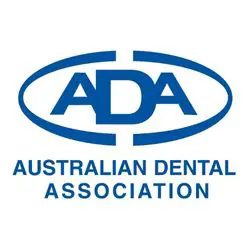
Key messages
- Teeth whitening treatment aims to lighten the colour of your teeth
- Teeth whitening done by a dental practitioner involves chemically treating the teeth.
- A dentist can whiten teeth using 'in-chair' or 'take-home' whitening treatments.
- Risks of teeth whitening can include chemical burns to the gums and sensitive teeth.
- Teeth whitening treatment is not recommended for women who are pregnant or breastfeeding.
Teeth whitening is the process of lightening the colour of the teeth. There are many causes for discoloured teeth. If you want to whiten your teeth it is best to go to:
The below information only mentions dentists, but teeth whitening can be done by all dental practitioners listed above.
What ingredients are used to whiten my teeth?
Teeth whitening done by dentists involves chemically treating the teeth to make the colour of them lighter. The main ingredients used in tooth whitening products in Australia include:
- hydrogen peroxide
- carbamide peroxide
- phthalimidoperoxycaproic acid (PAP).
The strength of the tooth whitening gel used depends on whether you get treatment at a dental clinic or at home. Dentists can use higher strength whitening gels.
Teeth whitening treatment options
There are two main ways a dentist can whiten teeth. They can do 'in-chair' or 'take-home' whitening. Whitening toothpaste can also be used when brushing your teeth at home.
In-chair or in-office teeth whitening means the treatment is done for you in the dental clinic. This treatment uses strong hydrogen peroxide gel and often a light is placed over the teeth. You should leave your dental appointment with whiter teeth. You may be recommended to use take-home whitening treatment to keep your teeth white.

A patient getting in-chair teeth whitening treatment at a dental clinic. Getty Images.
Take-home teeth whitening treatment is done at home by the patient under the supervision of their dentist. Custom-made thin, plastic trays that only fit your teeth are used. You put the gel in these trays at home.
Your dentist will tell you:
- how to put the whitening gel in the trays
- how much whitening gel to use each time
- how long to wear the trays for each day
- how many weeks to do the treatment.
This method takes longer than in-chair teeth whitening, but this does not mean that the final result is better or worse. Your dentist will discuss your options and give you advice on what treatment is best for you.

A custom-made teeth whitening tray and tube of whitening gel used for take-home teeth whitening treatment. Getty Images.
Whitening toothpastes work by helping to reduce stains on the outside surfaces of your teeth. These toothpastes do not tend to make a large difference to the colour of the teeth. These toothpastes work in different ways depending on the ingredients used.
Sensitive teeth are a side effect of teeth whitening treatment. Your teeth can become sensitive when using whitening toothpastes also.
What are the risks of teeth whitening products?
There are some risks when whitening your teeth.
Chemical burns
Take care when using a strong hydrogen peroxide whitening treatment. If the whitening gel touches the surface of the soft tissues it can cause chemical burns. For example, if it touches the lips, gums and tongue, these burns will often turn into ulcers before they heal.
Sensitive teeth
Teeth whitening can cause teeth to become sensitive to cold temperatures. Sometimes this can be very severe. For example, breathing air can be painful. Before you begin teeth whitening treatment, your dentist will give you advice about how to prevent or treat the tooth sensitivity.
Can I whiten my porcelain crowns, or veneers and white fillings?
Teeth whitening gel will only lighten the colour of tooth enamel. The treatment will not change the colour of porcelain crowns, veneers or composite resin (white) fillings. If you whiten your teeth and your fillings, crowns or veneers are a different cooler to your teeth, your dentist might need to replace them.
If the teeth you would like to have whitened have been treated with fillings, crowns, or veneers, your dentist will discuss these with you before progressing with treatment.
Can I whiten my teeth while I am pregnant?
Teeth whitening treatment is not recommended for women who are pregnant or breastfeeding. There isn’t any evidence that teeth whitening is dangerous for pregnant women, but there also isn’t any evidence that it is safe. Therefore, it is best to avoid it.
If you are thinking about using a whitening toothpaste during pregnancy or breastfeeding, it is best to get advice from your doctor or dentist first.
Should I whiten my teeth myself?
Do-it-yourself (DIY) teeth whitening advice online often suggests using baking soda mixed with water to create a paste to brush the teeth. Baking soda is mildly abrasive and it can help to manage light stains on the outside surface of teeth. Brushing your teeth with baking soda will not change the colour inside the tooth. It is not recommended that you do this as part of your daily brushing routine. Toothpastes with baking soda are better options over at-home pastes. Make sure your toothpaste also includes fluoride to help protect your teeth from tooth decay.
DIY teeth whitening kits can be bought online and in supermarkets and pharmacies. But there are risks to using these. It is best to have your teeth whitening done under the supervision of a dentist.
If you are interested in teeth whitening, talk to your dentist to see if the treatment is suitable for you.


